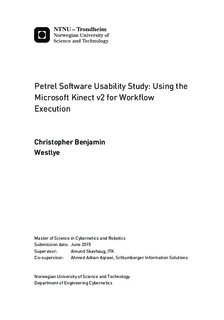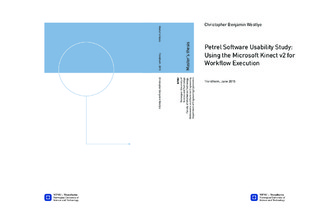| dc.description.abstract | The computer mouse has been one of the most commonly used interaction devices for a long
time. This thesis set out to explore new interaction possibilities in regards to effectiveness, efficiency and satisfaction. The Microsoft Kinect v2 sensor and the traditional computer mouse were selected for comparison. Kinect support was implemented for Petrel software and a usability study was conducted to evaluate Kinect s feasibility. The metrics used for evaluating usability were effectiveness, efficiency and satisfaction as reported by test participants through use of the think-aloud method and questionnaires. The test consisted of three parts, one about getting familiar with the software, one about data optimization and one about data visualization.
Ten students in the age range 21-29 participated in the study. 70% had used a Kinect before
while only 10% had used Petrel software before. The test was performed first with a mouse and
afterwards with the Kinect. Participants were required to provide feedback both during and after testing, both vocally and in writing. A SUS questionnaire was used, with mouse scores being 2.2% higher on average than Kinect scores. Similarly close results were seen in execution times, with only one of the three test parts differing significantly between devices. Task two took one minute and 24 seconds longer on average with Kinect. It can be concluded that the precision of an implemented gesture is essential for the Kinect s performance.
The qualitative analysis suggested that users preferred the mouse in regards to effectiveness and efficiency, but preferred the Kinect in regards to user satisfaction. It is likely that this is due to the Kinect s novelty effect. Both numerical results and the user evaluations were closer in value than anticipated. The findings implicate that supporting the right gestures and providing the required precision could make the Kinect a competitive interaction device in some areas. The most common suggestions made by study participants were demonstrations and presentations. It can be concluded that the Kinect is a good alternative where the fun and novelty aspects are important. | |

